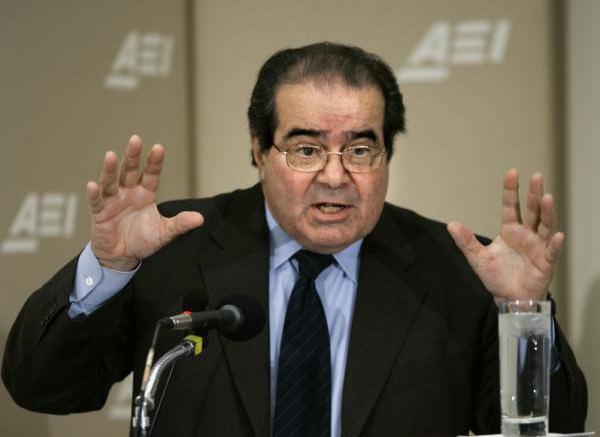There is no doubt that the death of Supreme Court Justice Antonin Scalia will have major repercussions on Supreme Court jurisprudence. A 30-year veteran of the Court, Justice Scalia was known for his originalist positions and scathing dissents. He was also the fifth conservative vote on a court that now finds itself divided, which has not only set off a bitter political fight regarding his replacement, but could have significant implications for litigants.
Class action lawsuits are one area in which this change will be felt deeply. Justice Scalia was a noted proponent of curtailing class actions, and his presence on the Court did just that—most notably in the Court’s 2011 decision in Wal-Mart Stores, Inc. v. Dukes. In Wal-Mart, which Justice Scalia authored, the Court redefined the commonality requirement of Federal Rule of Civil Procedure 23(a)(2) by holding that a class may not be certified unless a plaintiff can show there are common questions of law or fact capable of driving class-wide resolution, giving teeth to what was previously viewed as a weak commonality requirement.
Two years later, Justice Scalia penned the Court’s decision in Comcast v. Behrend, an antitrust class action in which the Court decertified a class that did not live up to the standard set in Wal-Mart. The Court emphasized that merits could be considered to the extent they overlapped with class certification, and because plaintiffs’ damages model was not properly tied to their theory of the case and could not be used to calculate damages on a class-wide basis, the class failed to meet Rule 23(b)(3)’s predominance requirement.
The Justice Scalia-authored opinion in AT&T Mobility LLC v. Concepcion preceded both of these cases, overturning a California decision holding a class action waiver unenforceable, and finding instead that the Federal Arbitration Act preempted a state rule prohibiting the waiver. It was a major win for companies seeking to avoid class action lawsuits. Justice Scalia’s presence was strongly felt, not only in these written decisions, but in the breakdown of the Court: all three rulings were decided by a 5-4 vote.
With Justice Scalia behind the bench, the Court repeatedly limited plaintiffs’ ability to bring class actions, and, in the wake of his death, the tides may already be changing. The Court’s first post-Scalia class action ruling, Tyson Foods, Inc. v, Bouaphakeo, proved to be a narrowly tailored win for labor and employment plaintiffs. The Court held that statistical sampling evidence can be used to show class-wide liability in certain labor and employment cases—including here, where the company did not maintain proper records regarding employees’ time. However, the court declined to address the second broader and more significant certified question of whether a class may be certified if it contains members who were not injured and have no legal right to damages, stating that the employer had abandoned that argument.
This decision may be just the beginning. As widely reported in the media, Dow Chemical recently settled an antitrust class action for $835 million on the condition that the Supreme Court hold any ruling on its petition for writ of certiorari in abeyance pending the district court’s approval of the settlement. The cert petition and settlement followed a jury award of $1.06 billion in a decade-long case finding Dow conspired with other chemical makers to fix prices and harm consumers. As reported by Bloomberg BNA, the company specifically pointed to changes on the Supreme Court and the potential for a future of anti-business rulings as instrumental in its decision to settle.
Court-watchers may not have to wait long to find out what that future looks like, as the Supreme Court will soon weigh in on additional class action cases that could have far-reaching ramifications. In November, the Court heard oral argument in Spokeo, Inc. v. Robins, an appeal from a Ninth Circuit decision holding that violation of a federal statute sufficed as the injury necessary for Article III standing despite the fact that the plaintiff had not suffered any concrete harm. The justices appeared closely divided during oral argument, and the decision could have major implications for future litigation, as a narrow ruling on standing would be a blow to class counsel. However, without Justice Scalia—or a ninth justice on the Court—the outcome is hardly certain. A 4-4 split would leave the appellate court’s decisions intact, which would be a win for plaintiffs. However, since split decisions do not have precedential effect, such a ruling would not necessarily have wide-reaching effects on future litigation.
Justice Scalia’s absence may also impact the cases that the Court chooses to hear in the future. On February 29, the Court denied certiorari in Direct Digital, LLC v. Mullins, a Seventh Circuit case that would have required it to decide if a class can be certified under Rule 23(b)(3) where the plaintiff had not put forth a reliable means of ascertaining membership in the class. And on April 4, the Court denied cert petitions in two related cases, Wal-Mart Stores, Inc. v. Braun (Nos. 14-1123 and 14-1124), which present the question of whether extrapolated evidence can be used to calculate damages suffered across the class rather than requiring individual proof.
In January, before Justice Scalia’s death, the Court granted certiorari in Microsoft v. Baker, a case involving alleged defects in Xbox 360 game consoles. The Court will decide whether, under Article III and 28 U. S. C. § 1291, which grants appellate jurisdiction over final decisions of district courts, federal appellate courts can review orders denying certification after the named plaintiffs have voluntarily dismissed their claims. The Ninth Circuit found it had jurisdiction and addressed the merits, reversing the district court’s order striking class allegations. Microsoft submitted its brief in the case on March 11. The company argued that, although appellate courts have discretion to accept interlocutory appeals of class certification orders under Rule 23(f), plaintiffs may not force such an appeal by dismissing their claims in order to create finality. Microsoft argues that this tactic goes against Supreme Court precedent, specifically the 1977 decision in Livesay v. Punta Gorda Isles, Inc., which held that a plaintiff was required to proceed on the merits of his individual claim before appealing the denial of class certification, even where the order was the “death knell” of the action. Microsoft claims that plaintiffs’ dismissal scheme would lead to additional and piecemeal appellate review, cause inefficiencies and upset the balance between district and appellate courts, and is unfair to defendants. A date for oral argument has not yet been set, but Justice Scalia’s replacement on the Court—or lack thereof—could have big implications for a case that could set the stage for future class action litigation.
With the spotlight on class actions, the fight over the next justice assumes unique importance to both sides. Despite the Republican-controlled Senate promising to stonewall any attempt to fill Justice Scalia’s seat before a new president takes office next year, President Obama has nominated Merrick Garland, the chief judge of the United States Court of Appeals for the D.C. Circuit, to the Court. Described as a “moderate liberal,” Garland has professed a commitment to remaining faithful to the Constitution and is known for narrow rulings rather than sweeping pronouncements. But that does not mean defendants would rest easy with him on the bench, as political experts have suggested that Garland could curb the Court’s recent pro-business decisions. His approach may be hard to predict, though, as his experience with class actions is limited. Given Justice Scalia’s strong conservative record on the Supreme Court, his death leaves significant uncertainty about the future of class action jurisprudence.
Source: www.lexology.com




